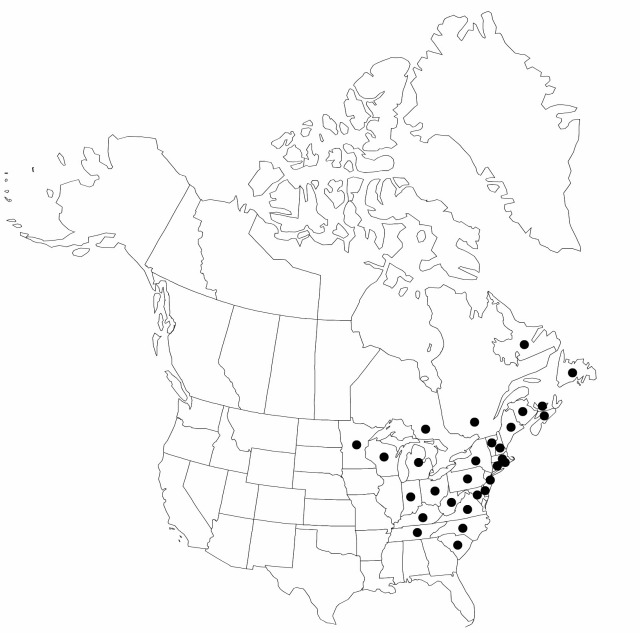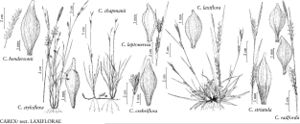Difference between revisions of "Carex leptonervia"
Rhodora 16: 214. 1914.
FNA>Volume Importer |
FNA>Volume Importer |
||
| Line 11: | Line 11: | ||
|name=Carex laxiflora var. leptonervia | |name=Carex laxiflora var. leptonervia | ||
|authority=Fernald | |authority=Fernald | ||
| + | |rank=variety | ||
|publication_title=Rhodora | |publication_title=Rhodora | ||
|publication_place=8: 184 1906 | |publication_place=8: 184 1906 | ||
| Line 37: | Line 38: | ||
-->{{#Taxon: | -->{{#Taxon: | ||
name=Carex leptonervia | name=Carex leptonervia | ||
| − | |||
|authority=(Fernald) Fernald | |authority=(Fernald) Fernald | ||
|rank=species | |rank=species | ||
| Line 52: | Line 52: | ||
|publication year=1914 | |publication year=1914 | ||
|special status= | |special status= | ||
| − | |source xml=https://jpend@bitbucket.org/aafc-mbb/fna-data-curation.git/src/ | + | |source xml=https://jpend@bitbucket.org/aafc-mbb/fna-data-curation.git/src/f50eec43f223ca0e34566be0b046453a0960e173/coarse_grained_fna_xml/V23/V23_797.xml |
|genus=Carex | |genus=Carex | ||
|section=Carex sect. Laxiflorae | |section=Carex sect. Laxiflorae | ||
Revision as of 20:11, 16 December 2019
Culms densely tufted, ascending, lax or, occasionally, decumbent, 12–44 cm × 0.7–1.2 mm. Leaves: basal sheaths brown; sheaths 3–24 mm, serrulate; blades ascending, midrib well developed abaxially, lateral veins developed, flat, 10–32 cm × 3–10 mm, blades of overwintering leaves smooth. Inflorescences: peduncles of proximal spike 0–8 cm, distal lateral spike not exserted; of terminal spike to 0.2 cm. Bracts 10–30 × 2–7 mm, 2d pistillate bract frequently overtops terminal and distal lateral spike, blade of distal lateral spike linear, narrower than spikes, widest bract blade of distalmost lateral spike 0.5–3.4 mm wide. Spikes 4(–5) per culm; lateral spikes 9–22 × 2.8–4 mm; terminal spike linear, 7–16 × 1.2–2 mm, arising from same bract as distal lateral spike, usually surpassed by distal bract. Pistillate scales 2–2.5 × 1–1.8 mm, apex acute or apiculate. Staminate scales ovate, 2.2–2.6 × 0.8–1 mm, margins hyaline or slightly brown tinged, apex acute. Anthers 1.6–2 mm. Perigynia 5–14 per spike, overlapping or slightly scattered on proximal spike, ascending or spreading, 8–18-veined, 2–3 veins conspicuous, others obscure, elliptic-obovate, 2.2–3.2 × 1–1.5 mm, membranous; beak abruptly to slightly curved, 0.3–1.1 mm. Achenes obovoid, 1.8–2.8 × 0.8–1.2 mm. 2n = 36.
Phenology: Fruiting spring–summer.
Habitat: Moist to wet deciduous, evergreen, or mixed deciduous-evergreen forests, higher elevations southward
Elevation: 0–1800 m
Distribution

N.B., Nfld. and Labr., N.S., Ont., P.E.I., Que., Conn., Del., Ind., Ky., Maine, Md., Mass., Mich., Minn., N.H., N.J., N.Y., N.C., Ohio, Pa., R.I., S.C., Tenn., Vt., Va., W.Va., Wis.
Discussion
Selected References
None.
